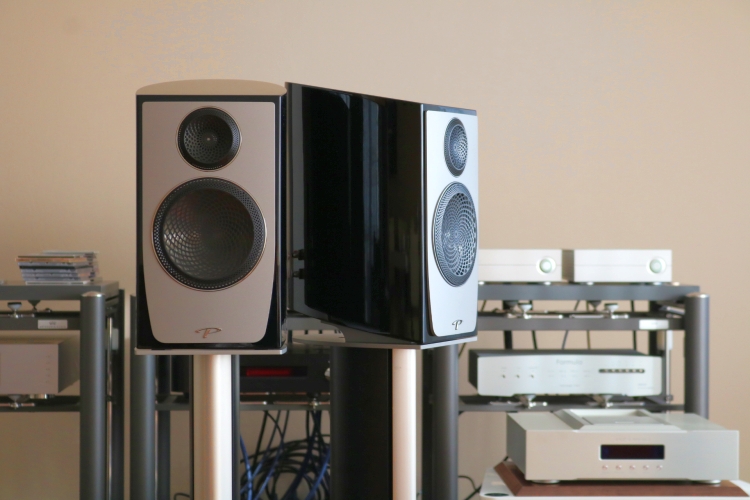
Review samples supplied by LookenListen, distributor for the Benelux
Retail prices in the Netherlands:
Persona B Stereo Pair 8.400
Persona Stands pair 1.798 euro
J29 stands (as shown) pair 518 euro
When attending a Penhold and Savor Audio demo on the invitation of Jan Legel I was massively impressed by the Paradigm Persona B monitor speakers. Right at the spot I already had a feeling that these were something special. Swiftly, a review was arranged and here we are.
Let me cut to the chase for a change: Super-coherent and articulate, very highly resolving, decidedly uncolored, and extremely transparent, the Persona B’s provide an overall performance not seen before in this price class. There, review done. Well, not quite, of course. We need more perspective and I can’t help myself diving in much more deeply anyway. So, let me rewind and start with something so seemingly trivial as the connection method. Because, with speakers as revealing as these, everything matters.
Connection Method
When using single-wire speaker cables in combination with the supplied metal strips that connect the HF and LF terminals, there are two connection methods. The most logical and likely most used method is to use the bottom connectors. However, in my experience, this leads to a bright, over-pronounced or even brittle and edgy treble. The reason for this is simple: the bass connectors are fed directly while the treble signal travels via metal strips. The metal strips that come supplied with the Personas look very nicely made and so I decided to just try it out once more, in spite of knowing better.

The speaker cable used for this review is the Jorma Design Trinity. The source is the CH Precision C1 DAC with its Roon board fed by the Antipodes CX directly. The starting point for amplification was the CH Precision A1.5 but I used various other amplifiers as well.
While the resulting sound is not at all harsh or edgy when the speaker cables are connected to the lower terminals, the treble and upper midrange do have a slightly intrusive prominence and there is an overall flatness that becomes more and more obvious the longer you play. After changing the configuration to use the upper connectors (treble fed directly and bass connected via the strips), indeed, the treble becomes less prominent and more integrated with the bass. More obviously is the change in the midrange which is now more organic and even has acquired a hint of warmth.
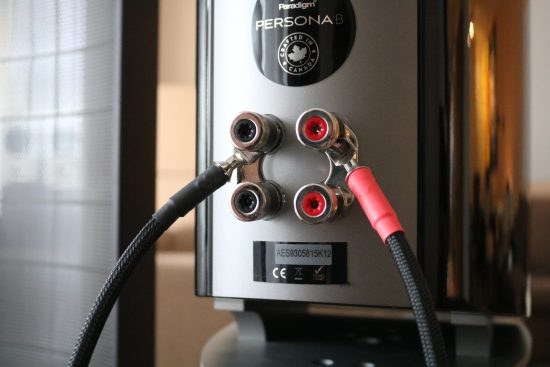
That would seem to be the end of it but this experiment can be taken one step further. The next step is to connect the speaker cable spades underneath the metal strip rather than on top of it, so that the spades connect directly with the gold-plated speaker terminals, rather than through the strip. And, indeed, again this makes a very noticeable difference and again both in the treble and the midrange. Although I did not have the feeling that the treble was edgy before, the electronically-produced claps in some tracks that I played were a little hard before this subtle tweak. As they are silky-smooth with the Martin Logan ESL15A’s, I figured that this was just an inherent character of the Beryllium tweeters. But I was wrong: with this connection method, the Persona B’s treble could now even be described as slightly lush but still very open and detailed and now even airier. Needless to say, the aforementioned claps were now also smooth. Along with this, the midrange had also become even more organic to make for a sound that graduated from technically extremely impressive but a little bit cool and flat to still impressively high-res and transparent yet sweet and organic and highly refined. Why would the treble suffer and not the bass? Well, the bass is also affected but in that frequency range, the added edge does much less damage. What’s more, the effect of the added edge in the bass could even be perceived as beneficial if the bass of the system was a little soft before. So, with the bass, it is more of a relative matter.
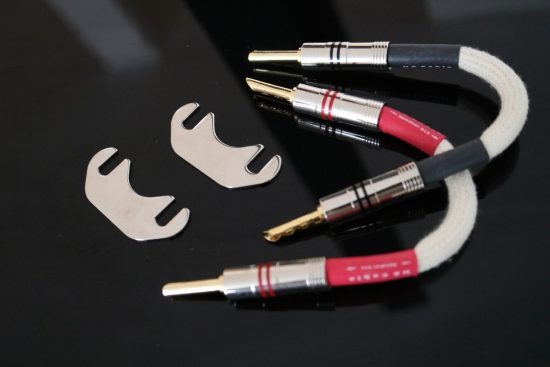
Wire Jumpers
The best solution is to remove the metal strips altogether. Ideally, the speakers should be connected with a true bi-wire cable but lacking that, wire jumpers could be used in place of the supplied metal strips. Theoretically, that would provide the second-best connection method but one needs to keep in mind that the jumper connectors and even the very short pieces of cable themselves can have a pronounced influence on the sound of the drivers that they connect to. That’s why it remains important to use well-matching jumpers.
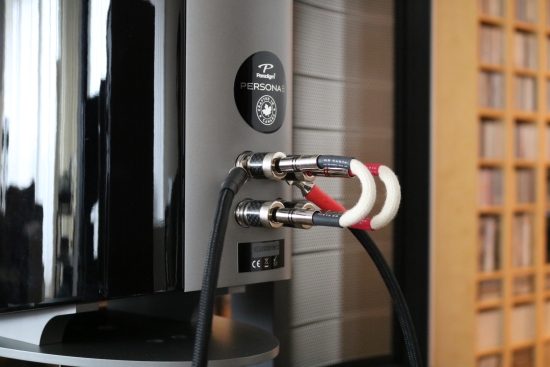
The only proper jumpers that I have available are HS Cable 015 made by HiFi-Supply of which I know that they are slightly smooth-sounding. When applied the same as the strips, so with the speaker cables still connected directly to the upper connectors, indeed, they make the bass slightly less tight and incisive than with the metal strips but they also provide a very pleasant warmth in the midrange along with a more full-bodied sound and a more enveloping and distinctly more 3D presentation. Clearly, the sound now lost the last bit of flatness. As has become clear from this test is that that the metal strips do indeed add edginess and a hard forward quality to the sound while making the entire presentation sound similar to their appearance: entirely flat.
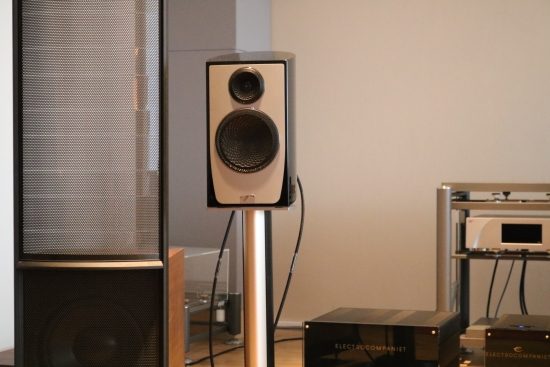
Getting on with it
The drivers have metal grilles that cover them and, according to the manufacturer, this is not only for protective or decorative use but they actually improve the drivers’ phase response. As they cannot be removed, I could not test this, but given the speakers’ utterly crisp and extremely linear behavior, I have no reason to doubt this. There is, however, an aspect to the tweeters’ delivery that, if not a result of the grilles, might be related to the drivers’ material. I have a feeling that the treble does not extend into the uppermost frequencies. To my ears, the treble is clean and linear, all the way up to a point. As the measurements contradict this, there must be something else at play. I should note that I am now comparing this to Martin Logan ESL15A’s and, in the recent past, to various Apogee ribbon loudspeakers which is not really fair, of course. And, to put this mild criticism further into perspective: I only heard it during the first few tracks. When listening longer the ear/brain quickly adjusts and all that is left is a consistent wonder of how utterly transparent a window these speakers are onto the music.
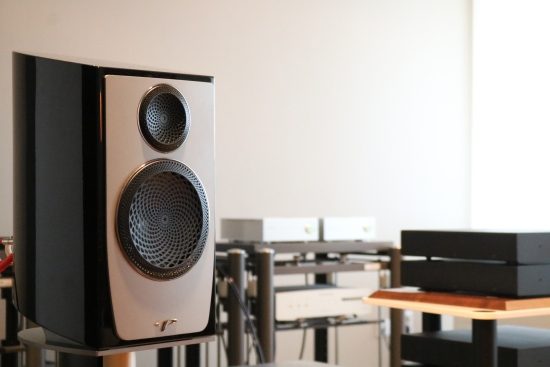
Speaking of full-range ribbon speakers, these also have plenty of less ideal aspects. One such aspect is bass articulation and propulsion, both of which the Persona B’s do very well. While on the subject of things that the Persona’s do very well, let me also comment that I’ve rarely heard dynamic speakers sound so immensely coherent and transparent with such freedom from cabinet colorations combined with such speed and agility. The nearest speakers that come to mind as being similar in the overall presentation are those made by Magico. Although I can’t make a direct comparison and I’m sure there are plenty of reasons to choose one over the other, based on auditions in different locations, I’d say that the Persona B’s presentation definitely has a lot of common ground with that of the Magico S1 MkII.
Amplifier matching
While the Persona B’s can be driven with pretty much any amplifier out there their utter transparency does require one pays attention to achieving the best match in terms of the cables and amplifier. The other components should be of similarly high quality but getting the right match is equally as important.
For instance, the Lejonklou Tundra 2.5 amplifier is low-powered at 24 watts but it is also one of the most refined sounding amplifiers that I have heard. With this amplifier, the Persona B’s sound about as fluid and high-res as I have heard them. But because this amplifier’s character is quite relaxed and non-offensive, the combined result is that of a sound that, while superbly refined, can lack some punch and attack.
What worked incredibly well was the CH Precision A1.5 fed directly from the C1 DAC, making for a delivery that ticked all the audiophile parameters as well as providing flow and lyricism. It was with this amp that audio buddy Niels commented that he was much impressed with how the speakers performed. Coming from someone who owns a Soulution 711 and Magico Q5’s, that is saying something.
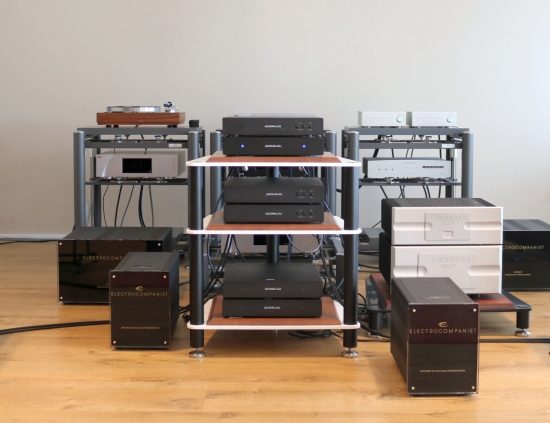
The Electrocompaniet AW180’s and AW600’s were less than an ideal match when fed directly from the C1, the resulting sound too flat and matter-of-fact. I suspect that these mono amps’ huge damping factors combine into too much control. Also, it was too obvious that these amplifiers are less finely resolving than the Lejonklou or CH. What did help was to add the Lejonklou Sagatun dual-mono preamp to the mix. This resulted in a sweeter and less overly controlled sound that was emotionally more engaging but still, the Electrocompaniets did not fully do the speakers’ immense resolution justice.
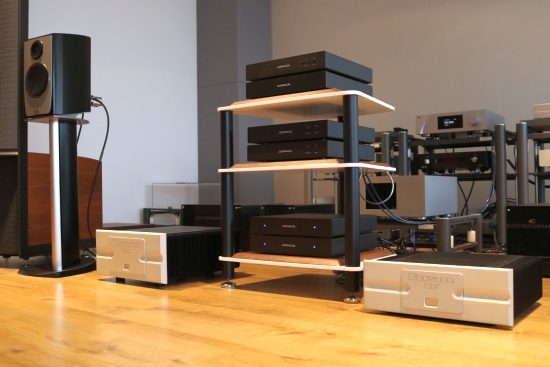
As will no doubt be surprising to many, the Bryston 4B Cubed actually worked very well and the 14B Cubed even better. With these amps fed directly from the C1 DAC, the Persona B’s were positively rocking and rolling! It was with the Brystons that they produced the deepest and most solid bass which is probably expected. But the Brystons also provided a super-enthusiastic and concrete sound with a vivid and communicative midrange along with smooth and well-refined treble. And even without a preamp in the chain, the Brystons never made the music sound overly controlled.
Even if the CH Precision A1.5 outperforms the Brystons on more than a few parameters (mostly more articulate and more highly resolving and refined) I still felt that the Brystons did a damn fine job. I’ve not got one at hand, but from other comparisons, I suspect that an Accuphase E600 Class A amp, and by extension, also an E650, might be just the ticket for these speakers. And indeed, Jan Legel later confirmed that an Accuphase preamp + class A power amp combo really made the speakers shine during one of the listening sessions that he attended.
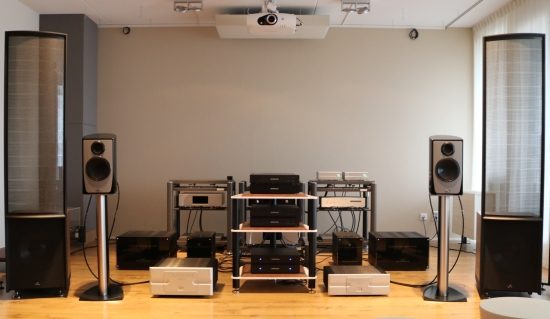
The bottom Line
The Persona B’s have world-class transparency, not only in the treble, to which this is so often restricted but also in the midrange as well as the bass. Also, they are extremely finely detailed and have superb micro-dynamics. The speakers also play very loudly without any signs of break-up. Lastly, the macro-dynamics are also good but this is admittedly not their strongest aspect. As often happens, a very nuanced, even-handed, and transparent product need not be the one that is most “rocking and rolling”. But I also would not pick these speakers for such music. What they do sublimely is to reveal everything there is to know about a recording with crystal clarity. They are like the proverbial magnifying glass onto your music while sounding sophisticated even under less than ideal circumstances. All this time I have not touched on the subject of the bass and that is for an important reason. Of course, a small monitor speaker cannot produce bass with the slam and depth of much bigger floor standing designs, but irrespective, while the bass is not any bigger, deeper, or more powerful than can be expected based on the cabinet dimensions I never felt that anything was missing. This really only becomes evident when playing R&B tracks with subterranean basslines or when comparing to the Kromas or, keeping with monitor speakers, the Graham Audio LS5/9’s. But while the latter have considerably deeper and fatter bass, there is no contest where resolution, linearity, and transparency are concerned. The Persona B’s bass is simply so well integrated and of such high quality that the lack of truly deep bass becomes a non-issue.
Conclusion
Well, I pretty much already gave it away in the header when I wrote: “Super-coherent and articulate, very highly resolving, decidedly uncolored, and extremely transparent, the Persona B’s provide an overall performance not seen before in this price class”. I should add that while 8000 euro sans stands is not pocket change, it will require a lot more to improve on this stellar performance. If the budget stretches then I would know of no better alternative than to check out the Paradigm Persona 3 floor standers which should retain everything there is to love about the B’s with deeper and more powerful bass.
External Links
Manufacturer’s website: Paradigm
Distributor for the Benelux: Lookenlisten.nl
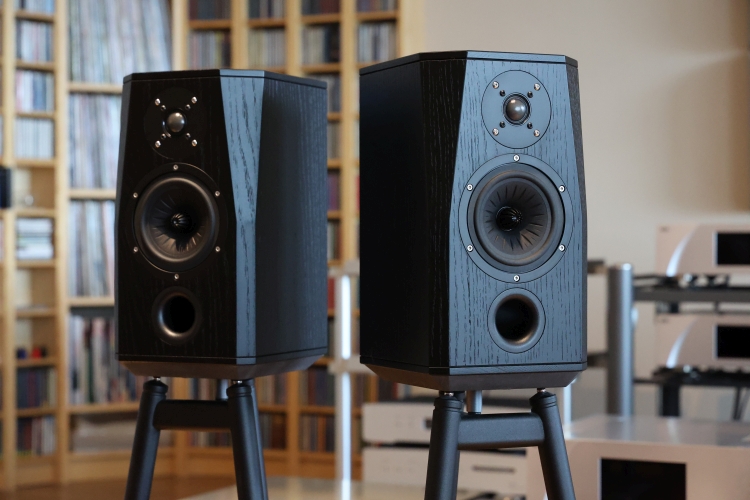
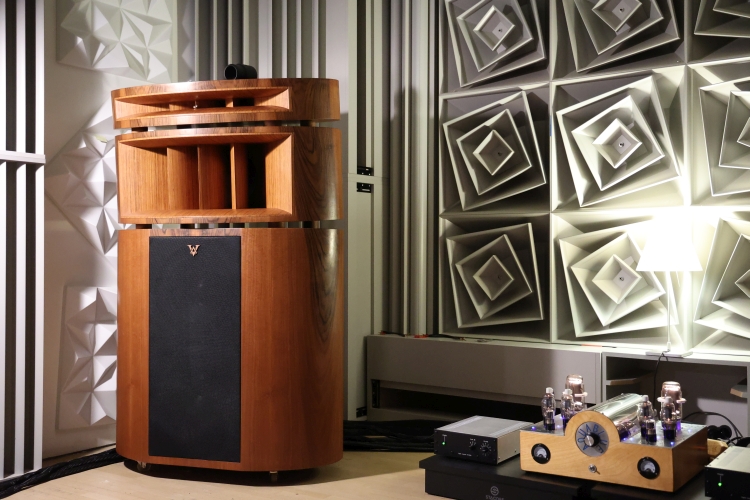
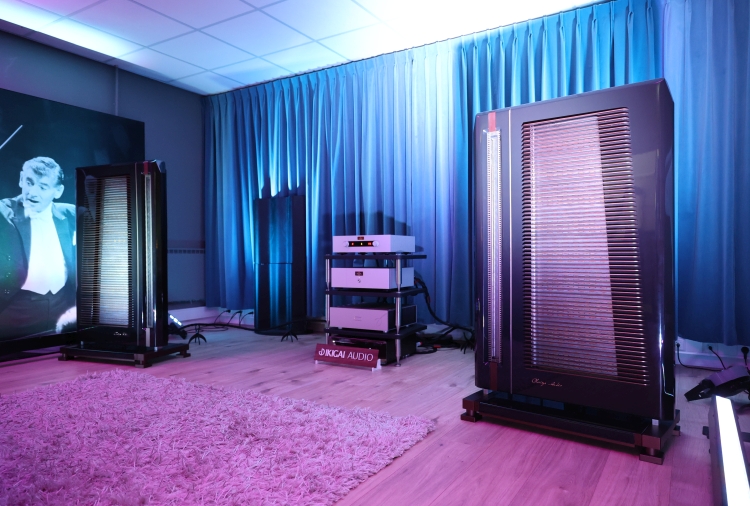
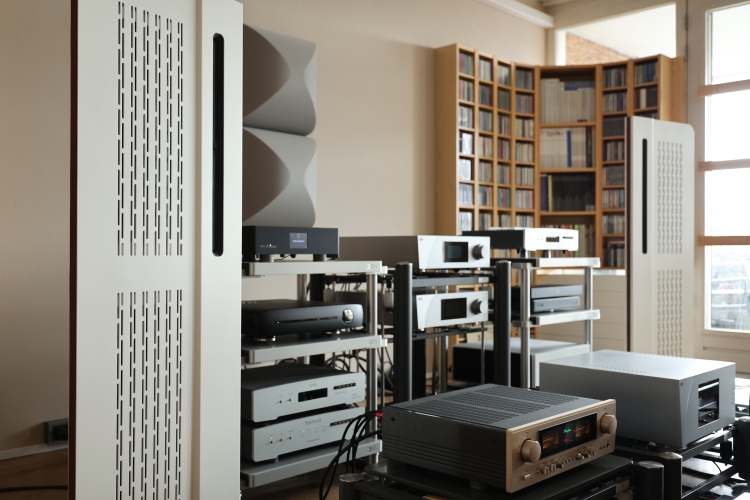
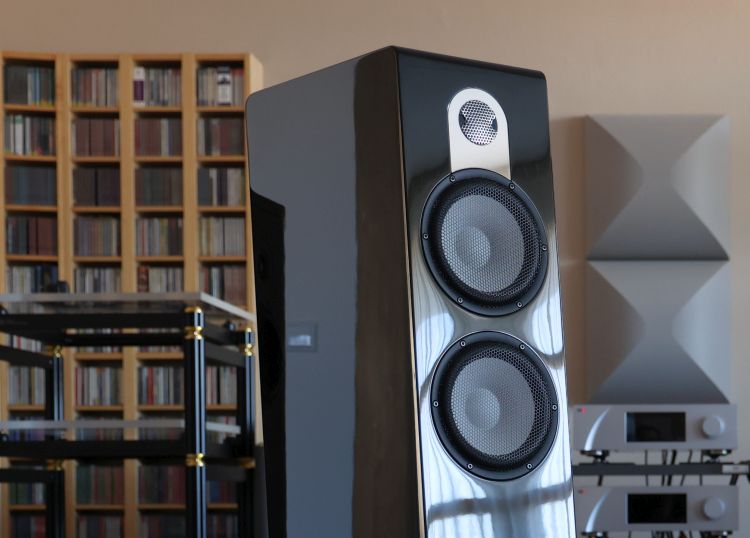
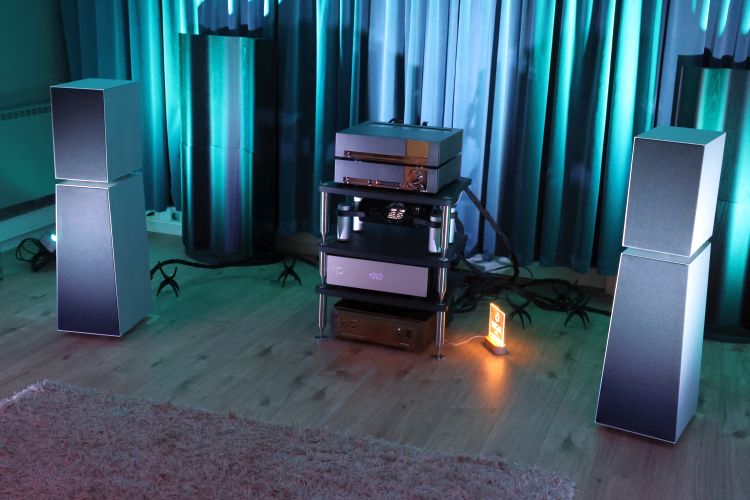
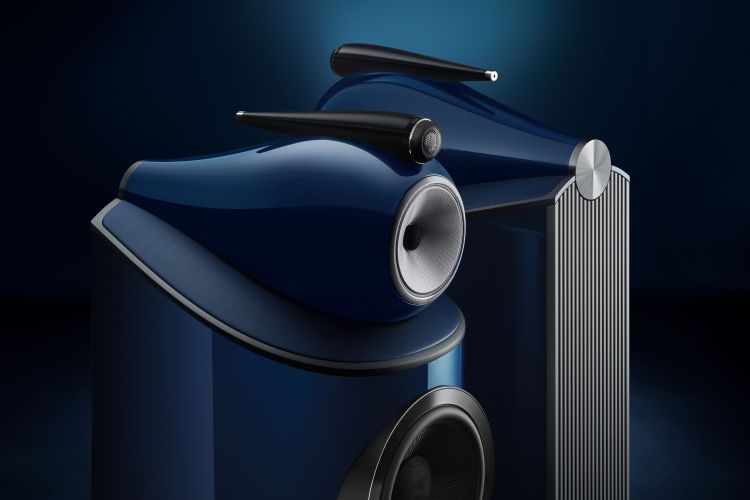
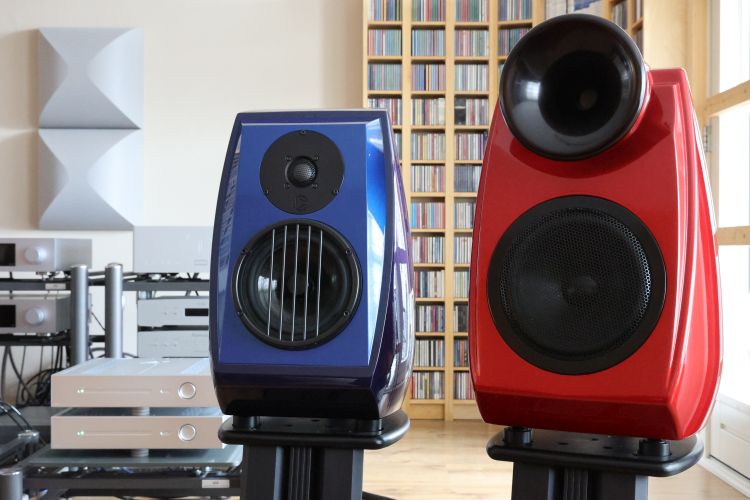
Hello Christiaan, I had the 3F in my room for listening test – simply amazing. Unfortunately my wife won‘t let me put floorstanding speakers in the living room. How about combining the Persona B with the Persona Sub instead of the 3F? What do you think? Thanks & best, Robert
I’ve no experience with the 3F nor any Paradigm sub. It’s certainly an option but beware that integrating a sub can be very tricky. It will be a time-consuming process of trial and error. That said, I hold the Persona sub in high esteem. When done right, the results may even outperform your expectations – in terms of pure bass quality. In terms of integration, it remains a matter of biting the bullet and seeing how far you can take it. If you do go down this road then make sure to try the sub in several positions, both corners and also free-standing. In the corner is not always best.
Thank you Christiaan, I made the same experience with subs in my system many years ago. think I will try the little Paradigms first without Sub (costly..) and see how far they go in my listening environment. If bass should be missed, I can still go for the sub journey.. All the best for 2021 ?
Hello Christiaan , any change that you do A review off the new Paradigm Founder 120 H?
I did propose reviewing more Paradigm speakers after the Persona B but that never materialized. The Founder 120H looks like an interesting speaker with its Active DSP woofer section and one never knows but TBH it’s not likely that I will review it.